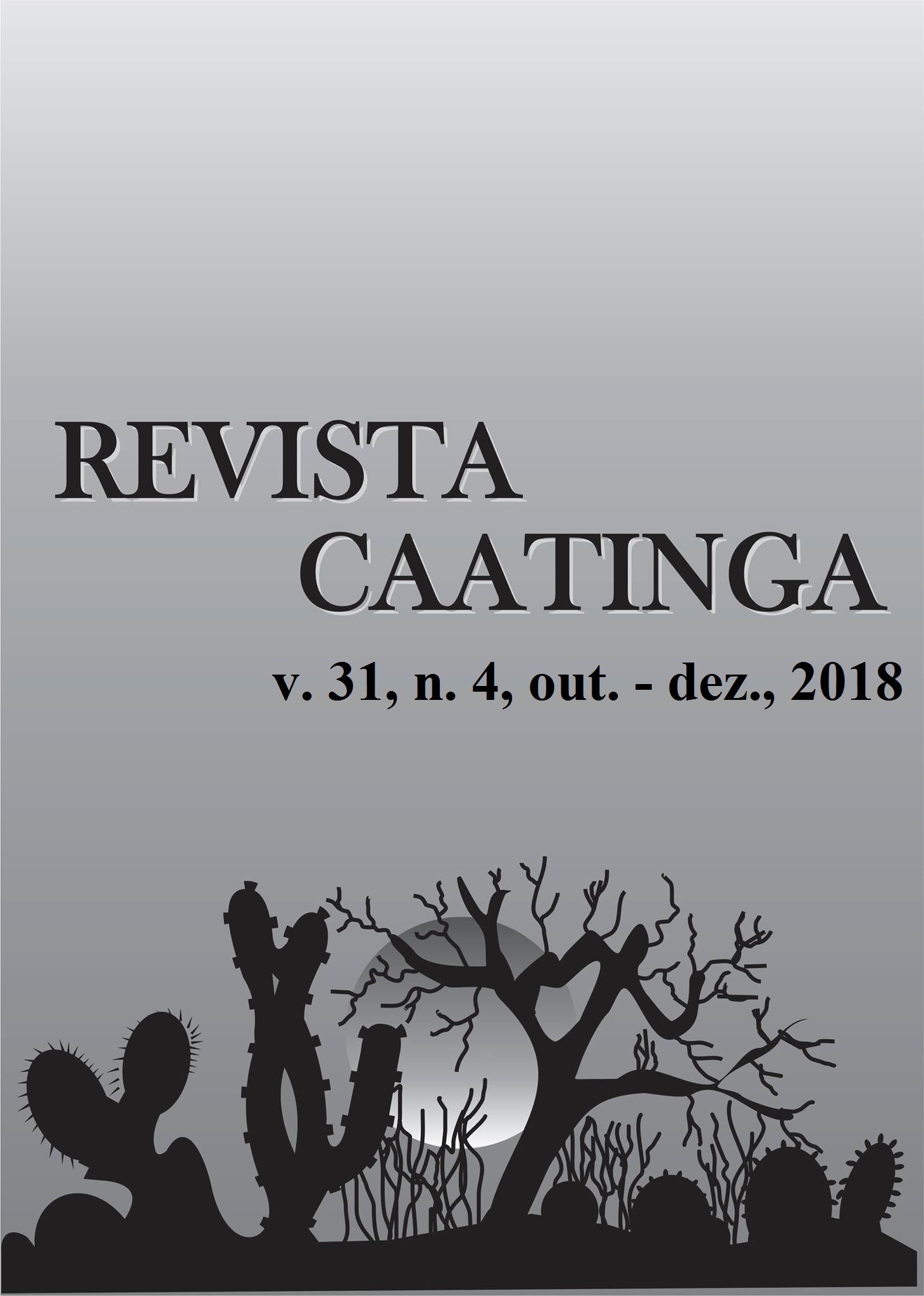PRODUÇÃO DE GIRASSOL FERTIRRIGADO COM PERCOLADO DE ATERRO SANITÁRIO
DOI:
https://doi.org/10.1590/1983-21252018v31n417rcPalavras-chave:
Helianthus annuus L.. Resíduo líquido urbano. Biomassa. Biocombustível.Resumo
O uso do percolado de aterro sanitário (PATS) na produção de biomassa para fins energético e biocombustível é uma alternativa que minimiza a degradação ambiental. Neste contexto, objetivou-se neste trabalho, analisar o efeito da aplicação de distintas proporções de percolado de aterros sanitários no cultivo de girassol (Helianthus annuus L.). O experimento foi conduzido com delineamento em blocos casualizados, com cinco tratamentos T1 – 100 % de água da rede de abastecimento – AA (Testemunha); T2 – 80 % de AA e 20 % de PATS; T3 – 60 % de AA e 40 % de PATS; T4 – 40 % de AA e 60 % de PATS; e, T5 – 20 % de AA e 80 % de PATS, e quatro repetições, totalizando 20 parcelas experimentais. O girassol foi cultivado em ARGISSOLO Vermelho – Amarelo eutrófico, durante 81 dias em Mossoró/RN. Durante o ciclo do girassol foram determinadas as características vegetativas altura de planta (AP), número de folhas (NF), diâmetro do caule (DCaule) e do capítulo (DCapítulo). Comprovou-se que para todas as variáveis estudadas houve diferença estatística entre os tratamentos. Em geral, o tratamento 60 % de AA e 40 % de PATS apresentou melhor desempenho com relação às características vegetativas do girassol.
Downloads
Downloads
Publicado
Edição
Seção
Licença
Os Autores que publicam na Revista Caatinga concordam com os seguintes termos:
a) Os Autores mantêm os direitos autorais e concedem à revista o direito de primeira publicação, com o trabalho simultaneamente licenciado sob a Licença Creative Commons do tipo atribuição CC-BY, para todo o conteúdo do periódico, exceto onde estiver identificado, que permite o compartilhamento do trabalho com reconhecimento da autoria e publicação inicial nesta revista, sem fins comerciais.
b) Os Autores têm autorização para distribuição não-exclusiva da versão do trabalho publicada nesta revista (ex.: publicar em repositório institucional ou como capítulo de livro), com reconhecimento de autoria e publicação inicial nesta revista.
c) Os Autores têm permissão e são estimulados a publicar e distribuir seu trabalho online (ex.: em repositórios institucionais ou na sua página pessoal) a qualquer ponto antes ou durante o processo editorial, já que isso pode gerar alterações produtivas, bem como aumentar o impacto e a citação do trabalho publicado (Veja O Efeito do Acesso Livre).







